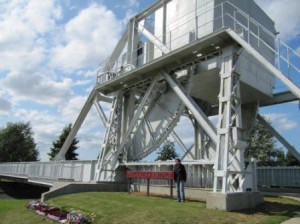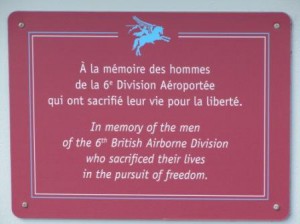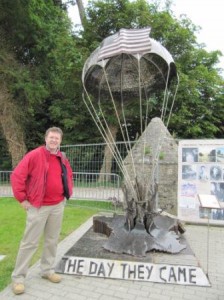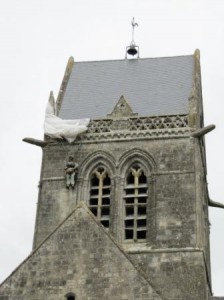D-Day: Remembering the sacrifices made so we could be free, 68 years ago
Sixty-eight years ago, today, 6th June 1944, D-Day was underway. In his Order of the Day, General Eisenhower, the Supreme Allied Commander, spoke movingly of the great crusade being undertaken in the cause of freedom; his simple words belying the immensity of the task and the heroism and strength of will of so many who were to accomplish it.
With these words, men departed for their assigned missions; and sixty-eight years ago, today, on the 6th June 1944, the allied landings along the Normandy coast had begun.

By 00.21, just 5 minutes after their gliders had landed Major John Howard’s men had secured the strategically important bridge over the Orne Canal, code-named Pegasus Bridge. D-Day and the Battle for Normandy and the liberation of Europe had truly begun.
As Britain and the Commonwealth marks the Queen’s Diamond Jubilee this past weekend, we should not forget the brave men and women who gave their lives so that we would be free from tyranny.

From the dark days of the retreat to Dunkirk before Operation Dynamo’s “miracle of the little ships”, through the Battle of Britain and the suffering of the Blitz, Britain’s fight for freedom endured and, with her allies and the sacrifices of so many, was ultimately triumphant in Western Europe, across North Africa and in the Far East.
The greatest airborne and amphibious assault ever mounted, D-Day has been immortalised in the film The Longest Day and other films and shows like Saving Private Ryan and Band of Brothers and countless books. A defining moment in world history, D-Day and the reason why it was necessary must never be forgotten.


The landings on the beaches of Normandy – Utah, Gold, Sword, Juno and Omaha – began around dawn. Along the Calvados coast, the Rangers scaled the cliffs of Pointe du Hoc under fire to take out guns that threatened the landing ships. Overnight, British and American airborne soldiers were dropped by parachute (some 21,000) or landed by glider to secure or destroy installations like Pegasus Bridge or the Merville Battery or to seize important crossroads like the one at Ste. Mere Eglise.

That they succeeded is a testimony to the planning, the resources, the leadership but, ultimately, the bravery of so many in those momentous hours beginning on the night of June 5th/6th 1944, hours that became D-Day, the Longest Day…

Last summer, my partner, Ganing, and I visited the beaches and memorials to those who fought for liberty in June 1944. For those who haven’t been, I would urge you to make the effort, to gain a greater understanding of what so many endured and suffered to win us the freedom that we so much enjoy today.
